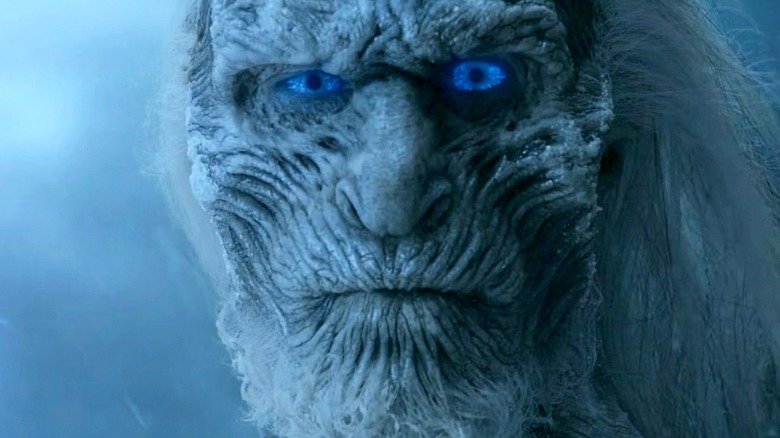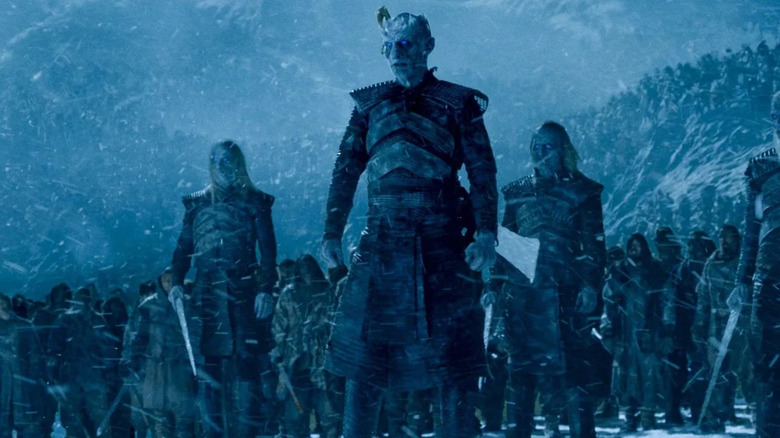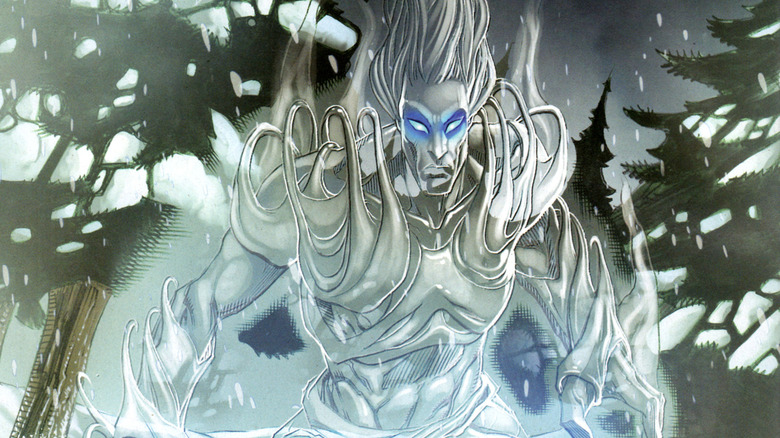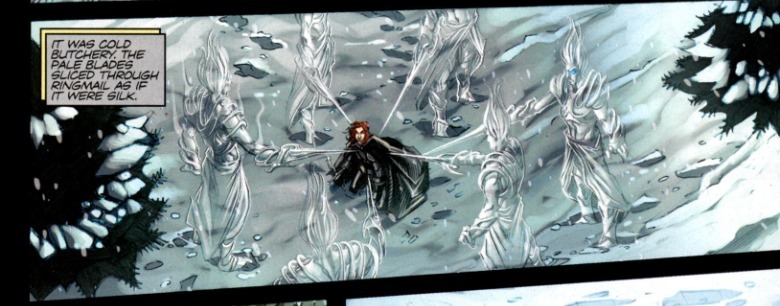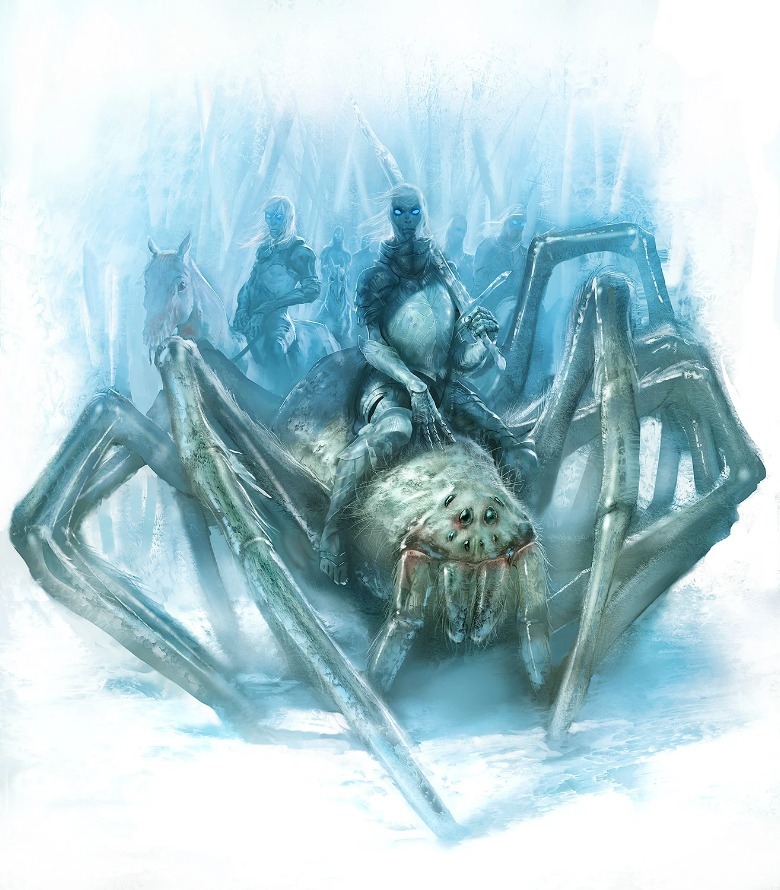With author George R. R. Martin’s fantasy saga “A Song of Ice and Fire” currently (and perhaps forever) unfinished, many mysteries remain unanswered. The TV adaptation “Game of Thrones,” which deviated from the source material even before running out of it, can only fill in so many blanks.
Many questions burning brightest in my mind are about the Others: the ethereal ice beings that prowl beyond the Night Watch’s Wall with an army of the undead at their control. The Others are supposedly the main villains of these books, but five tomes in, and they still feel like they’re on the periphery of the story. Extremely little has been revealed about the Others — their history, their culture, their goals, etc. Many of the most derided parts of the “Game of Thrones” ending come down to how it failed to give satisfying answers about the Others.
The series expanded on vague hints in the books that the Others might be transformed humans. According to “Game of Thrones,” the Others were first created long ago by the Children of the Forest, the wood nymphs that lived in Westeros before the First Men came. As mankind tore down their wooden homes to make way for theirs, the Children created a defense force and lost control of it. Is this what Martin had in mind, or an invention of series creators David Benioff and D.B. Weiss? We may never know. (Though more observant readers have leaped on a passage from “A Storm of Swords” describing an Other as “some child’s snow knight.”)
“Game of Thrones” also gives the Others a leader: the Night King, an invention of the show unlikely to appear in the books given Martin’s disinterest in any “dark lord” characters. Even their name is changed, from “Other” to “White Walker.” The former is more generic but also more mysterious. It suggests that these ice fiends are so utterly inhuman they can only be called “Other.” “White Walker” is more evocative and distinct, but it reflects the show’s attitude of treating the Others as just snow zombies. The source material suggests they should look less like orcs, trolls, or demons, and more like elves or fairies.
How the White Walkers are described in the Game Of Thrones books
The White Walkers in “Game Of Thrones” (and by extension, “House of the Dragon”) have blue flesh with frostbite, shriveled like a mummy’s. This and the Walkers’ collapsed rib cages suggest they’re as undead as the Wights they command. When they start wearing armor, it’s black plated leather that wouldn’t look out of place on a living man.
Compare this with how the Others are described in the books. In the prologue of “A Game Of Thrones” three unfortunate souls meet the Others. First they sense them, “pale shapes gliding through the wood” and “a white shadow in the darkness.” Then they come face to face with their hunter:
“Tall, it was, and gaunt and hard as old bones, with flesh pale as milk. Its armor seemed to change color as it moved; here it was white as new-fallen snow, there black as shadow, everywhere dappled with the deep gray-green of the trees. The patterns ran like moonlight on water with every step it took […] its eyes; blue, deeper and bluer than any human eyes, a blue that burned like ice.”
This description is far more ethereal than the TV series; the Others are portrayed not as an endless, ravenous horde, but sinister near-invisible shadows. Their armor evokes how ice naturally reflects light, taking on the color palette of what appears before it. The White Walkers are silent minus an occasional screech, but the Others are heard to speak a tongue that to human ears sounds like crackling ice. This, plus their armor and weapons carved from ice, underlines them as other – something so different from how we live that we can’t understand it. For us, ice represents death. To these Others, it is life.
The Game of Thrones comics have a different White Walker design
Naturally, Martin’s description is difficult to depict in a visual medium. The next best thing to your imagination is how the Others are drawn in the “A Game of Thrones” comic book by artist Tommy Patterson. These Others were designed with the input of Martin, who described his vision for the creatures as such:
“The Others are not dead. They are strange, beautiful … think, oh … the Sidhe [Gaelic fairies] made of ice, something like that … a different sort of life … inhuman, elegant, dangerous.”
The results are more ghostly than the live-action White Walkers. Colorist Ivan Nunes makes the Others look almost intangible and translucent, like wisps riding on the winds of winter.
As Patterson documents in the back-up pages of “A Game of Thrones” Volume 1, the design went through several revisions and he struggled to perfect it. Then, Martin sent him John Picacio’s drawing of the Others for the 2012 “A Song of Ice and Fire” calendar (reprinted in the comic trade paperback).
For another canonical depiction of the Others, here’s how artist Marc Simonetti depicts them (printed in the 2014 guide book “The World of Ice and Fire”). These Others look less ethereal than Patterson’s in the comic, but also more preserved and pretty than the White Walkers.
I’ll also spotlight some fan art depictions of the Others that I think capture the “elegant [but] dangerous” look Martin intended.
Most characters in the world of Westeros are not pure good or evil; Martin stresses over and over in his writing how people are complex creatures, with often contradictory good and bad halves. He also generally avoids the fantasy literature pitfall of making the good guys look heroic and the villains demonic. In “A Song of Ice and Fire,” evil can wear a face as comely as Cersei Lannister’s.
Martin even applies this to the story’s inhuman ice monsters. The word that comes to my mind with his description of the Others is “uncanny” — when something is familiar, yet not quite right. This makes it both creepy and alluring; you sense danger but can’t look away. The White Walkers, though, are so obviously repellant and ugly that anyone in their right mind would run from them without a second glance.
Making the Others look scary, not mysterious, is just one case of the show not quite capturing the books’ complexity.


